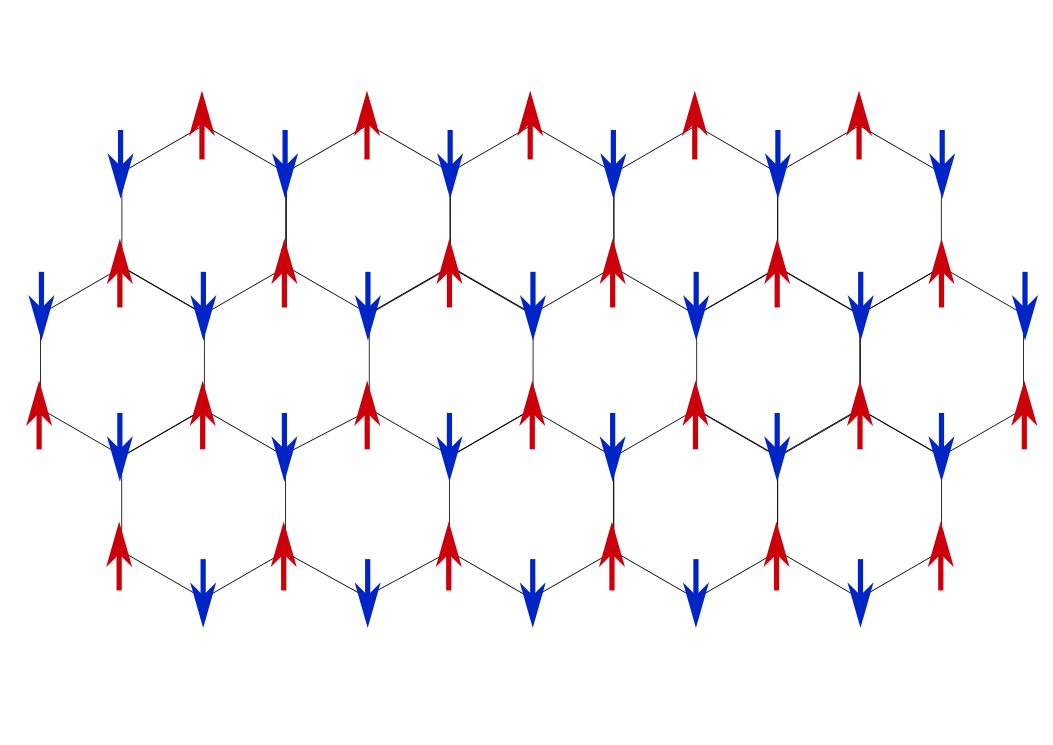Investigating the structure of spin systems through density matrix embedding and geminal theory
Investigating the structure of spin systems through density matrix embedding and geminal theory
Promotor(en): D. Van Neck /16FUND03 / Many-particle physicsWithin the realm of many-body physics, spin-lattice Hamiltonians offer some of the most surprisingly rich physics, such as long-range magnetic order or spin frustration, despite their apparent simplicity. In these Hamiltonians a lattice geometry is chosen, single spins are placed at the lattice sites, and interactions between spins on different lattice sites are introduced, leading to widely different behaviors of the ground state. Mapping out the phase diagram for different geometries and interactions thus remains one of the major challenges in current many-body physics. Unfortunately, such systems are too large to be solved exactly, and standard mean-field theory fails to accurately describe the strong interactions present in these models.

The density matrix embedding theory (DMET) [1] is a new technique that can approximately solve large strongly correlated systems, based on an exact treatment of a small subsystem and an approximate treatment of the surrounding environment. The key observation is that the major heap of quantum correlations within a system are local, so the main idea of DMET is to self-consistently embed a small subsystem, which is solved exactly, within a larger environment system, which is solved on a lower level of theory. By combining these two levels of theory, DMET allows for an (in principle) exact numerical treatment of systems far outside the scope of standard methods. The theory covers a wide range of possible methods due to the large freedom in the choice of low-level theory for the environment, which is of key importance for the accuracy of the resulting description.
One such choice of “low-level” theory follows from the theory of geminals [2]. Geminal wave functions originate within quantum chemistry in the description of electron pairs as a generalization of the concept of a Slater determinant. As such, they can be seen as extending standard Hartree-Fock mean-field theory, but they are also formulated in such a way as to be immediately applicable to spin systems. Here, the wave function is formulated as either a superposition of identical spin excitations on top of the vacuum (Antisymmetrized Geminal Power - AGP) or as different spin excitations on top of a single reference Slater determinant (Antisymmetrized Product of 1-reference orbital Geminals – AP1roG). Efficient algorithms exist for the optimization of such geminal wave functions for a given system, resulting in a mean-field treatment capable of describing strongly correlated systems beyond the reach of Hartree-Fock theory. Much work has been done on this subject at the Center for Molecular Modeling in collaboration with the group of Paul W. Ayers at McMaster University, Canada.
Goal
While both DMET and these geminal wave functions have already shown much promise in the description of quantum chemical models, they have not been combined for spin systems. This is the main subject of this thesis. The goal of this master thesis is for the student to learn about different geminal methods and the theory of DMET, develop a theoretical framework for the application of DMET combined with a geminal mean-field theory, and to implement this in the language of his/her choice. The resulting program can then be used to investigate the phase diagram of selected spin systems. This thesis combines learning and implementing techniques from different branches of physics, while requiring physical insight for the selection of the optimal mean-field wave function.
Aspects
The engineering aspect of this thesis concerns the modeling and subsequent computational investigation of spin systems and quantum magnetism, which have gained much experimental attention with the recent advent of ultracold atomic gases in optical lattices.This research topic will be conducted in the framework of a strong international network and if possible the student will be actively involved in work discussions with collaborative partners.
- Study programmeMaster of Science in Engineering Physics [EMPHYS], Master of Science in Physics and Astronomy [CMFYST]ClustersFor Engineering Physics students, this thesis is closely related to the cluster(s) FUNDEMENTALS, MODELINGKeywordsMany-body methods, Theory development, Programming, Numerical methods, Exotic phases, AggregatesRecommended coursesMany-body physics, Quantum entanglementReferences
[1] Knizia, G. & Chan, G. K.-L. Density Matrix Embedding: A Simple Alternative to Dynamical Mean-Field Theory. Phys. Rev. Lett. 109, (2012).
[2] Limacher P.A., Ayers P.W., Johnson P.A., De Baerdemacker S., Van Neck D., Bultinck P. A New Mean-Field Method Suitable for Strongly Correlated Electrons: Computationally Facile Antisymmetric Products of Nonorthogonal Geminals. J. Chem. Theory Comp. 9, 1394–1401 (2013).

